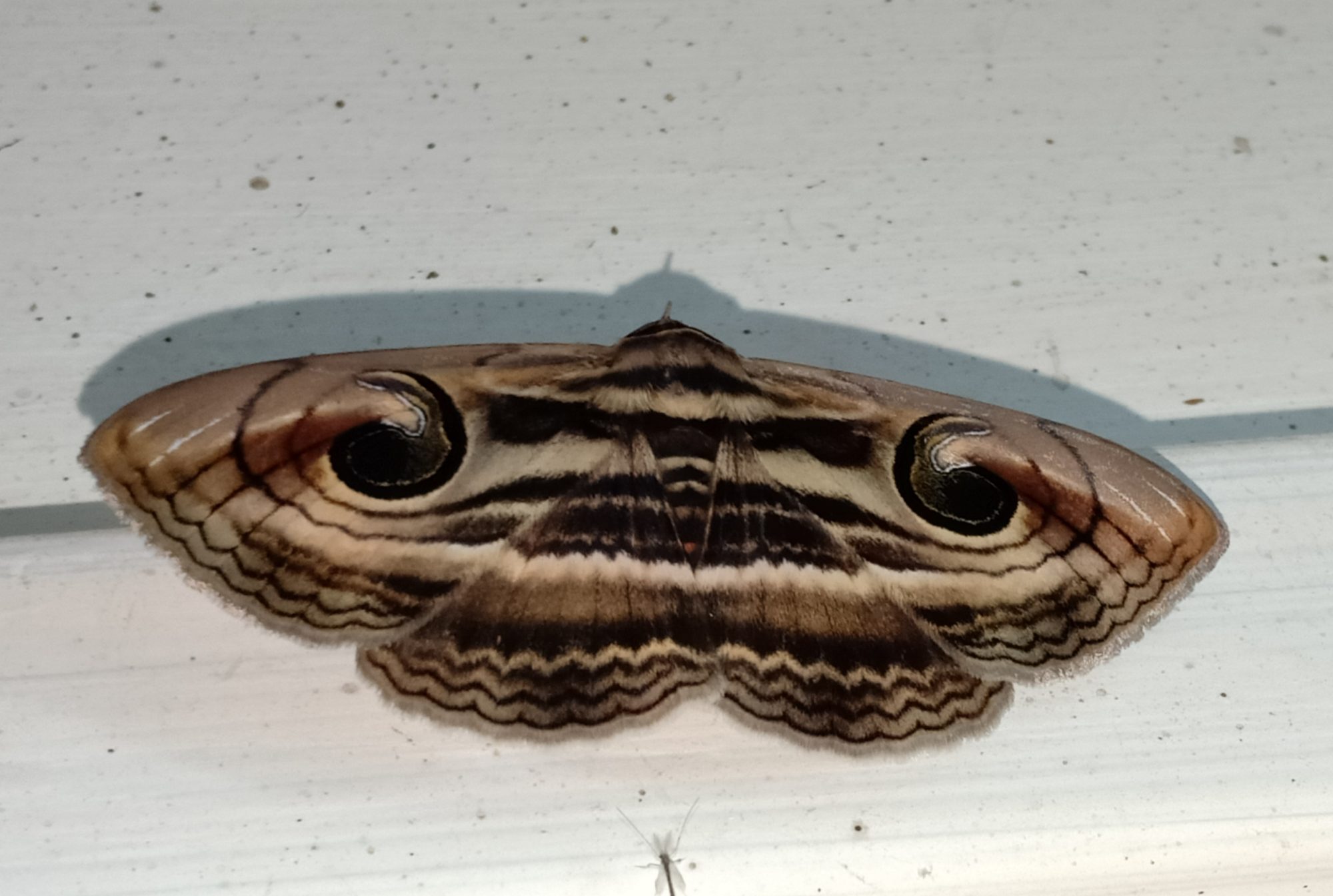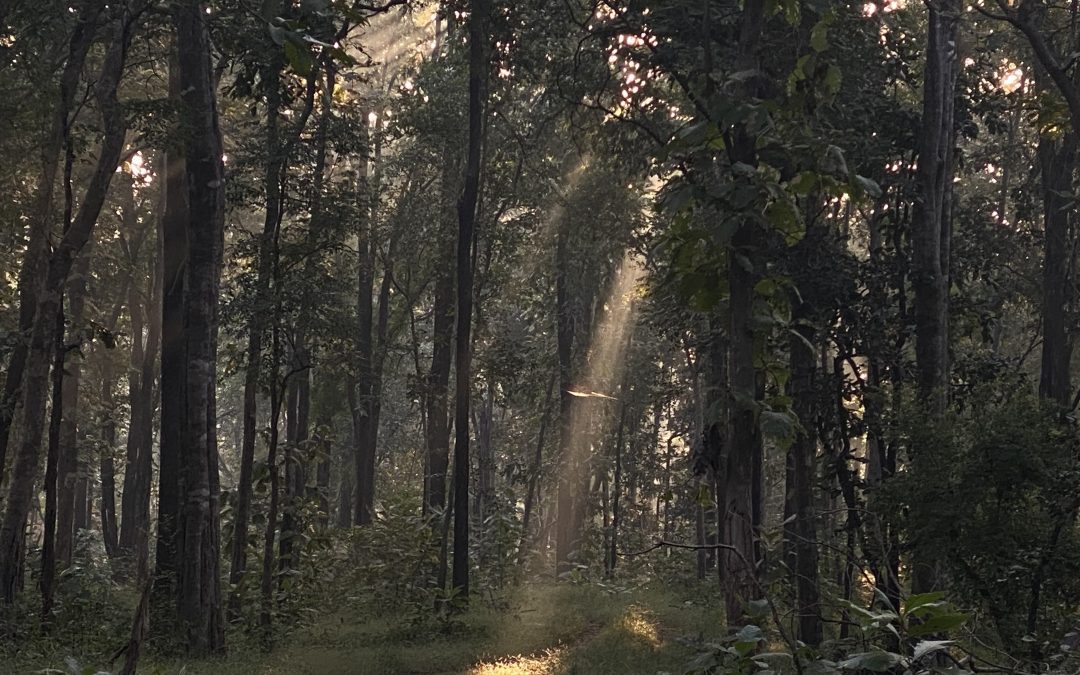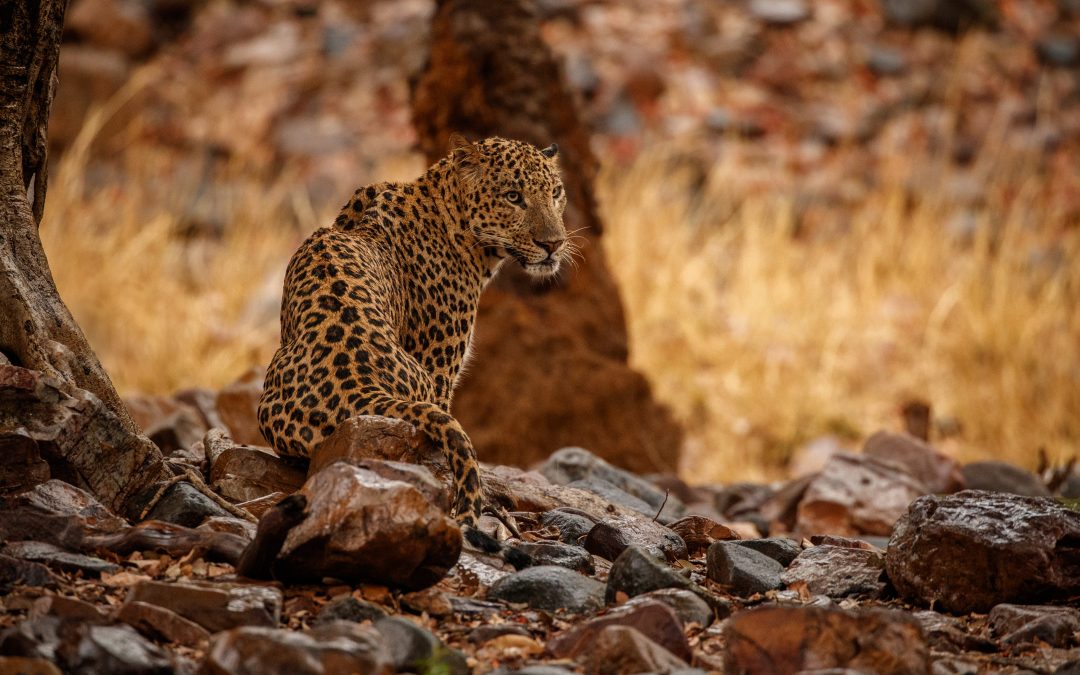On the super-moon 2016, after watching the most spectacular moonrise on River Denwa in Satpura, Bejoy and I walked under the moonlit skies that poured whiteness onto forested pathway and the sight was euphoric. We walked past some overgrowth of lantana and heard clicking sounds in the air around a bush, the sound was like clicking fingernails. I turned the torch on to cast at some moths in the air – some unidentified and some familiar, a katydid and a mathematical orb spider weaving her web for the night.
‘What could make such a sound?’ exclaimed Bejoy, a naturalist at lodge who has been noticing such clicks since a week during his sunset walks.
Click – click- click again, Bejoy’s excitement triggered the torch towards the sound and there were 4 to 5 Erebid moths, we did a triangulation to confirm if these moths clicked. Yes it did! Some moths were probing on lantana berries. We checked the bush and nearby clumps to discover that they were all similar looking moths having an ‘eye’ mark on their forewing, which might ward off predators while it also aptly titles them as ‘Owlet’ moths. However some moths differed by the white forewing pattern, it possibly indicated their sexual dimorphism. In our inquiry we brightened a worn-out owlet moth with our torch and we bagged it carefully in our fleece jacket as a sack and let it in a room to audit if the individual clicked. It stay put for few minutes and hopped but didn’t click even once, but we did- a few photographs and left it to its lantana pub.
A long time ago, a very long time- about 60 million years ago, when complex senses were developing in complex living organisms like ultrasonic and echolocation, a humble moth decided to equip a military-grade sonar jamming device to counter a recently evolved flying mammal; Bat. Most insectivorous bats have the power of echolocation for their nocturnal travels, but they perhaps were preaching an old man how to cough! Moths have evolved for over 190 million years, and some moth’s ultrasonic ability evolved about 8 million years before bats had evolved!
Wildlife biologist Aaron Corcoran and team shines evidence that the feeble, the papery, the slow-flying, powder-winged moth have ability to make ultrasonic clicks at a rate of 4500 times per second! Further research by scientists also revealed that those moths rubbed the muscles around their genitals to produce such clicks. After several experiments on Tiger moths and Hawk-moths, Aaron was convinced that these insects had developed with time to trick a complex mammal. Investigations revealed that the ultrasounds sent by bats who read the echoes rendered by objects the sound waves hit were blurred by high-speed clicks done by moths and further confounded the bat’s acoustic perception of objects.
Would the clicks made by owlet moths here at Satpura prevent them from a bat attack too? It needs to be experimented the way Aaron did, but we the naturalists at Forsyth Lodge have been tuning in to the moth-talks when they click during the bat’s hawking time. We have been crepuscular since this super moon night to record more observation and credit our owlet moths with such marvelous super power.












Recent Comments